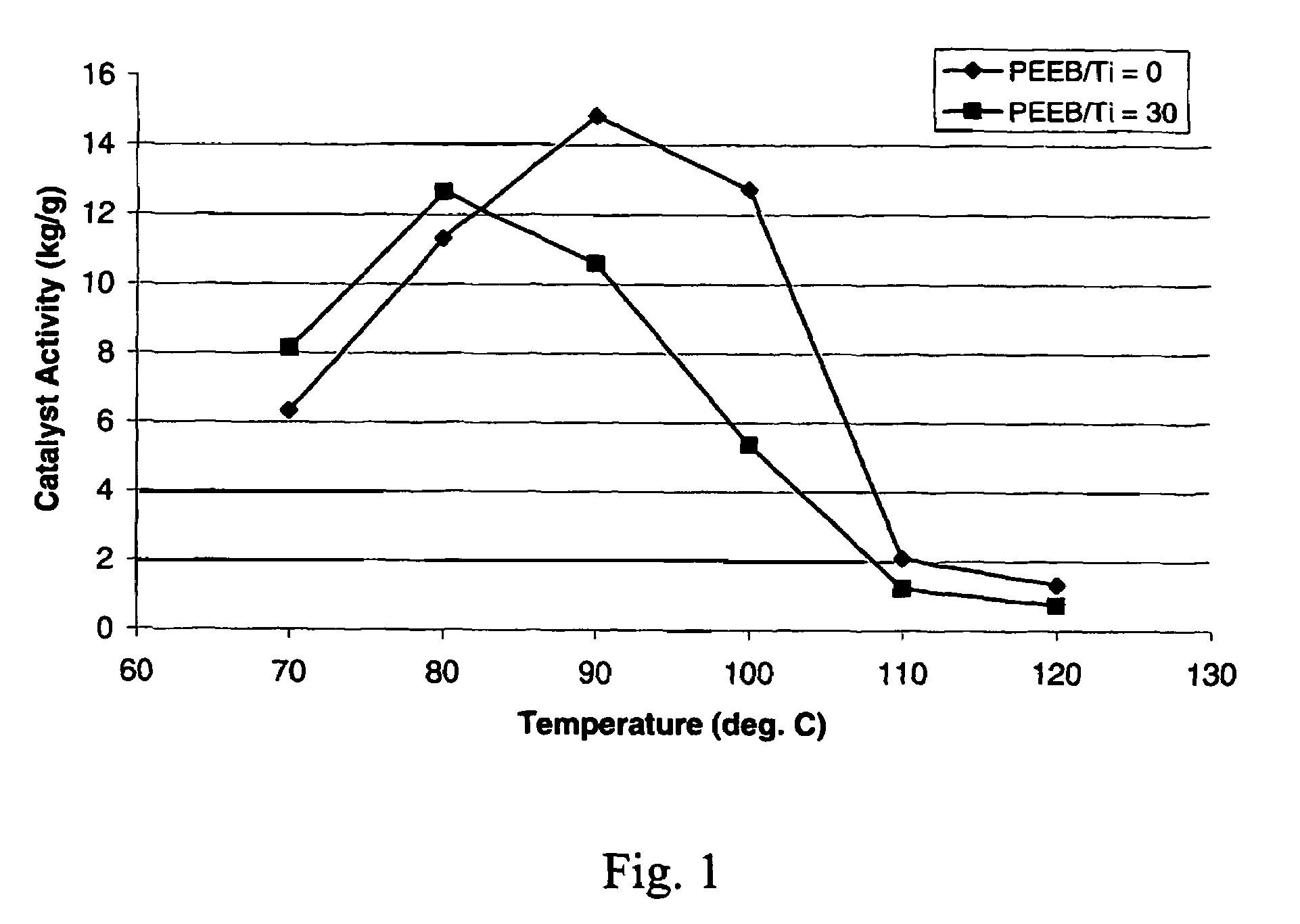Catalyst composition for ethylene polymerization
a technology of catalyst composition and polymerization, which is applied in the direction of catalyst activation/preparation, physical/chemical process catalysts, chemical/physical processes, etc., can solve the problems of difficulty in operation and early reactor shutdown, ineffective operation of various reactor components, and high labor intensity, so as to reduce sheeting or fouling, improve operation, and increase the duration of operation
- Summary
- Abstract
- Description
- Claims
- Application Information
AI Technical Summary
Benefits of technology
Problems solved by technology
Method used
Image
Examples
example 1
[0054]Ethylene polymerizations are carried out in a 48 cell automated, combinatorial multireactor (available from Symyx Technologies, Inc., and operated substantially according to U.S. Pat. No. 6,306,658). All solvants are dried prior to use. Reactor conditions employed are an initial charge of 70 kPa (10 psig) H2 with ethylene supplied continuously during the polymerization to provide a total reactor pressure of 0.7 MPa (100 psig). A standard MgCl2 supported titanium containing Ziegler-Natta protocatalyst composition prepared substantially according to the teachings of U.S. Pat. Nos. 6,248,831, 5,290,745, 4,376,062 and 4,293,673 is employed.
[0055]Standard reactions without a PCA are: 157 μl of a 0.05M solution of triisobutylaluminum (TIBA) in mixed alkanes solvent (Isopar E™, available from Exxon Chemicals Inc.) in an amount to provide Al / Ti molar ratio of 500 / 1, 5205 μl of mixed alkanes, 138 μl (0.248 mg / ml) of a mixed alkanes slurry of the procatalyst, followed by a rinse of 500 ...
PUM
| Property | Measurement | Unit |
|---|---|---|
| temperature | aaaaa | aaaaa |
| temperature | aaaaa | aaaaa |
| operating temperature | aaaaa | aaaaa |
Abstract
Description
Claims
Application Information
 Login to View More
Login to View More - R&D
- Intellectual Property
- Life Sciences
- Materials
- Tech Scout
- Unparalleled Data Quality
- Higher Quality Content
- 60% Fewer Hallucinations
Browse by: Latest US Patents, China's latest patents, Technical Efficacy Thesaurus, Application Domain, Technology Topic, Popular Technical Reports.
© 2025 PatSnap. All rights reserved.Legal|Privacy policy|Modern Slavery Act Transparency Statement|Sitemap|About US| Contact US: help@patsnap.com

